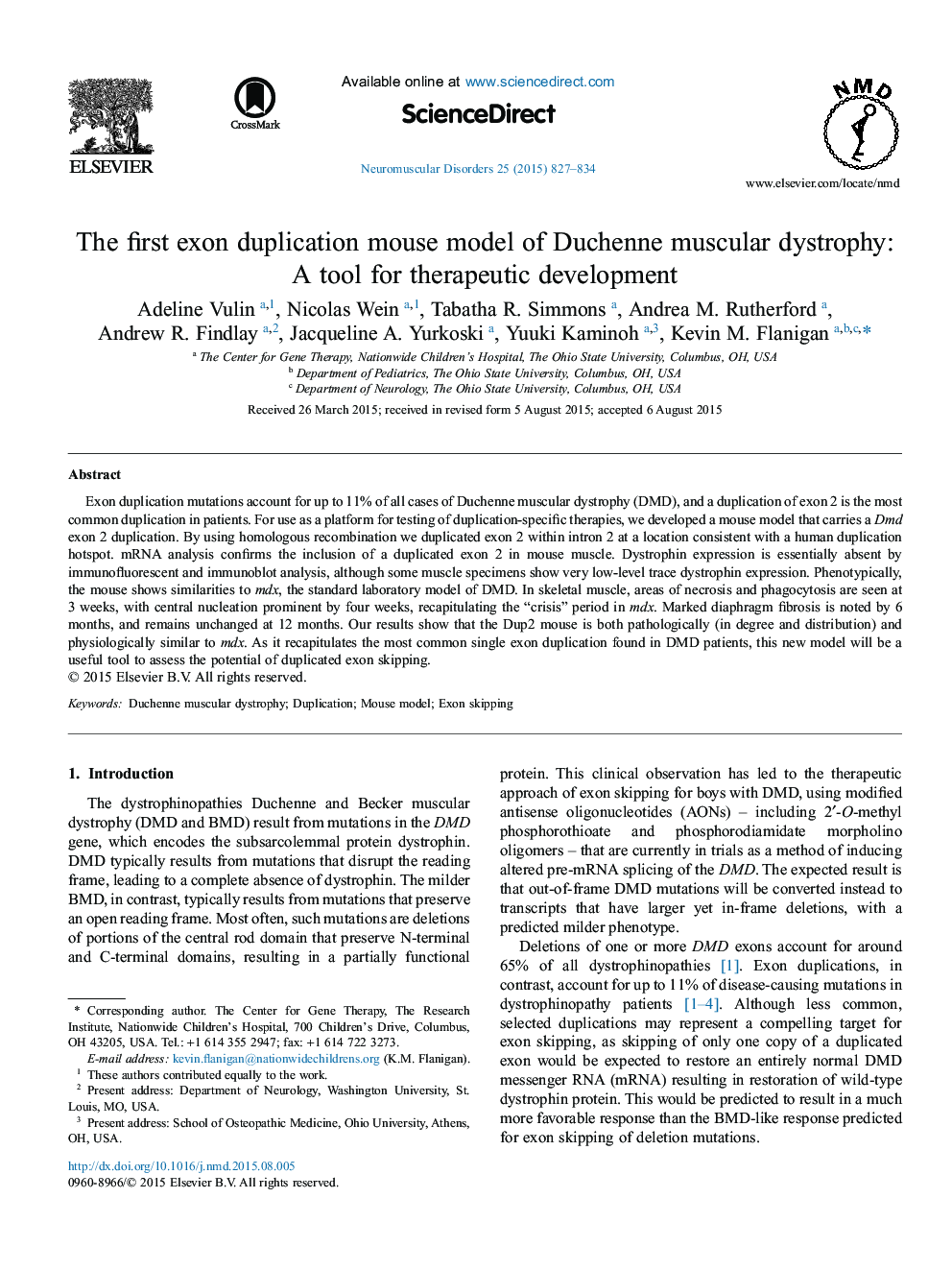| کد مقاله | کد نشریه | سال انتشار | مقاله انگلیسی | نسخه تمام متن |
|---|---|---|---|---|
| 3078823 | 1189270 | 2015 | 8 صفحه PDF | دانلود رایگان |
• Exon 2 duplication is the most frequent exonic duplication associated with DMD.
• We created the 1st mouse carrying an exon duplication developing muscular dystrophy.
• The exon 2 duplication results in a disrupted reading frame, and minimal protein expression.
• The Dup2 mouse is both pathologically and physiologically similar to mdx.
• This new model will be a powerful tool for testing duplication-specific therapies.
Exon duplication mutations account for up to 11% of all cases of Duchenne muscular dystrophy (DMD), and a duplication of exon 2 is the most common duplication in patients. For use as a platform for testing of duplication-specific therapies, we developed a mouse model that carries a Dmd exon 2 duplication. By using homologous recombination we duplicated exon 2 within intron 2 at a location consistent with a human duplication hotspot. mRNA analysis confirms the inclusion of a duplicated exon 2 in mouse muscle. Dystrophin expression is essentially absent by immunofluorescent and immunoblot analysis, although some muscle specimens show very low-level trace dystrophin expression. Phenotypically, the mouse shows similarities to mdx, the standard laboratory model of DMD. In skeletal muscle, areas of necrosis and phagocytosis are seen at 3 weeks, with central nucleation prominent by four weeks, recapitulating the “crisis” period in mdx. Marked diaphragm fibrosis is noted by 6 months, and remains unchanged at 12 months. Our results show that the Dup2 mouse is both pathologically (in degree and distribution) and physiologically similar to mdx. As it recapitulates the most common single exon duplication found in DMD patients, this new model will be a useful tool to assess the potential of duplicated exon skipping.
Journal: Neuromuscular Disorders - Volume 25, Issue 11, November 2015, Pages 827–834
